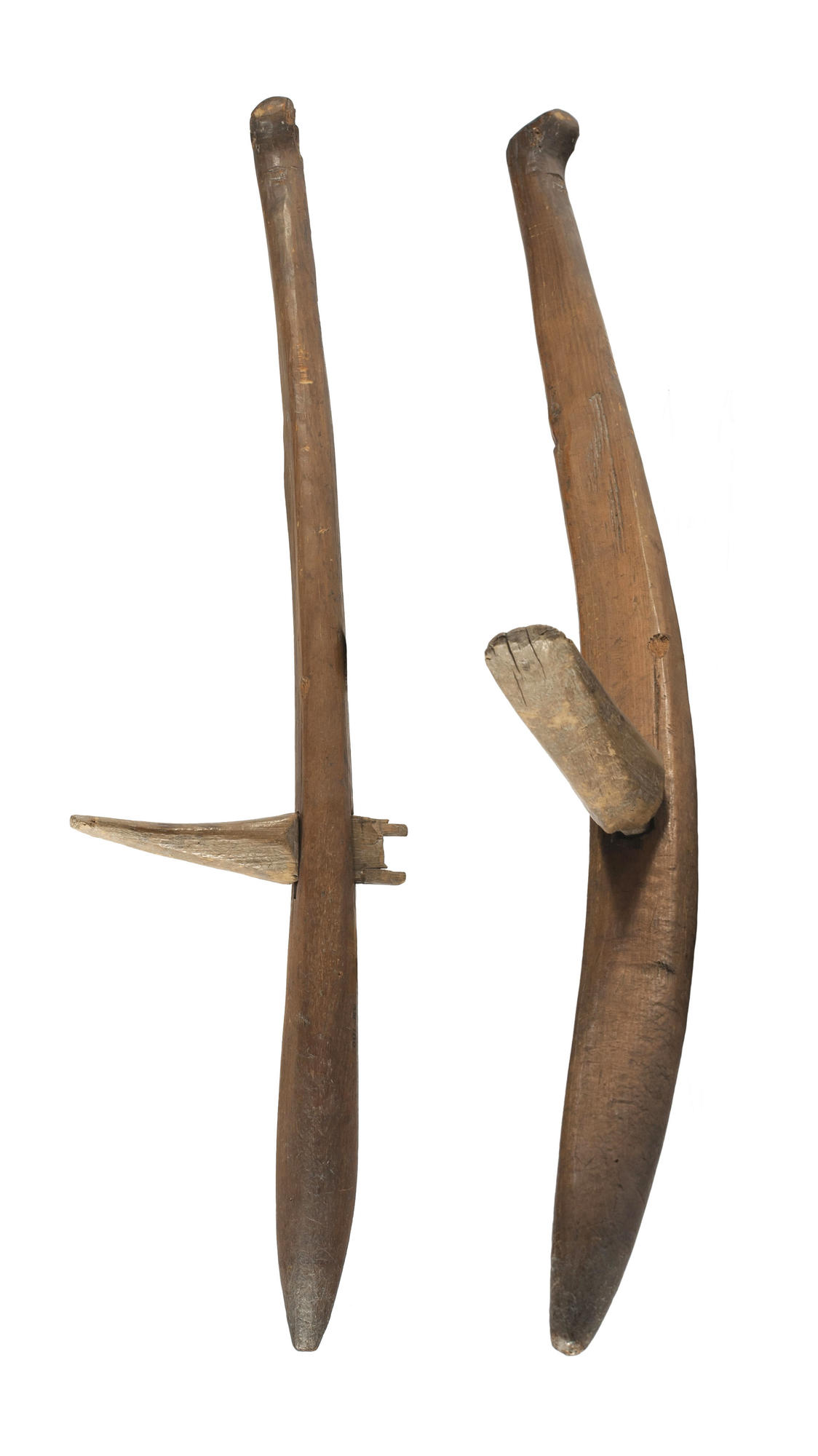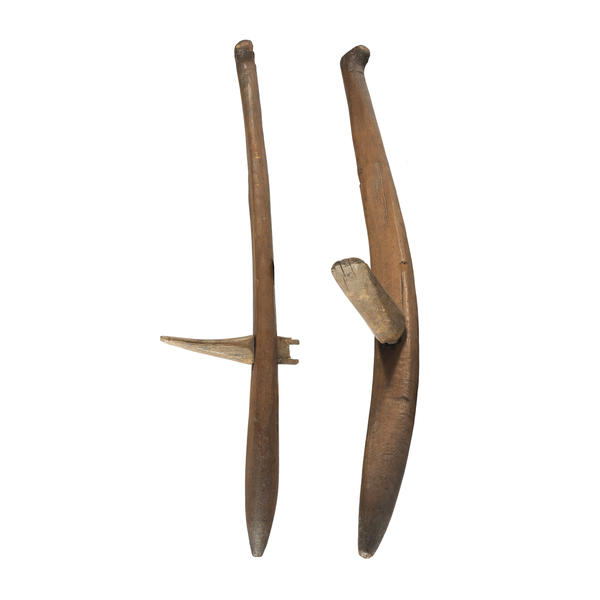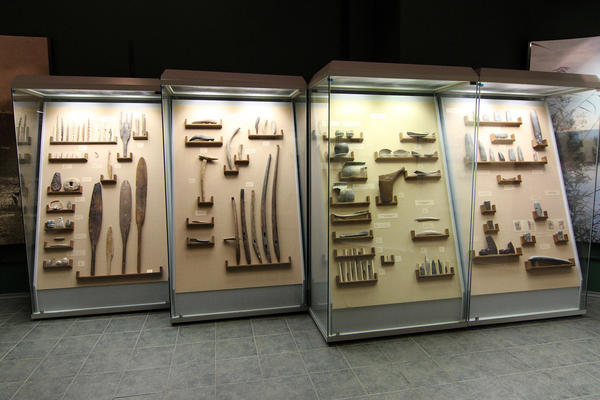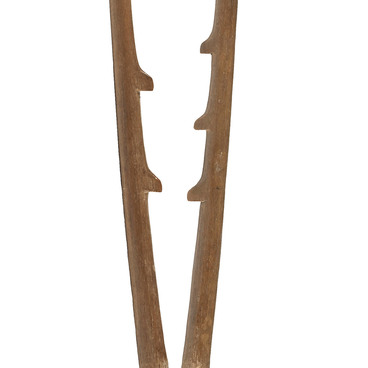The wooden digging stick with a pedal was made by ancient people who lived in the Bronze Age. This is one of the first tools that people used for soil cultivation. The main occupations at that time were hunting and fishing, the economy based on agriculture and cattle breeding did not exist yet. However, people had to dig the earth in order to survive: to bury the dead, get minerals, build dwellings and make various holes in the earth for hunt and agriculture, such as traps, storage pits and compost pits. If enemies attacked, people took refuge in dugout shelters.
Digging stick with a pedal
Время создания
Metal age
Размер
45x5x7 cm
45x5x7 cm
45x5x7 cm
Техника
Sawing, planing, gouging
3
Открыть в приложении#4
Unknown Author
Digging stick with a pedal
#5
#3
Panorama of the museum hall Shigir Treasure. Digging tools are exhibited in the central showcase. Photograph by Evgeny Tamplon.
Wooden digging sticks are one of the latest exhibits in the Shigir collection. To determine their age, researchers conducted a trace analysis, studying the traces on the ancient objects. The analysis showed that the digger stick with a pedal was made using metal tools. This means that the exhibit is about 6 thousand years old.
#6
To make a digging stick, a wooden blank was first made. The wooden surface was evened with scraping tools, abraded with quartz sand, and then polished with a piece of soft leather. The tool was given a curved shape. One end of the stick was sharpened to make it easier to dig the ground. At the bottom part of the tool, a hole was made into which a small pedal was inserted. It served as a foot support: ancient people understood that it was easier to drive a stick into the ground with a foot than with arms and hands. Such digging sticks were prototypes of today’s shovels. They were used to dig holes, but also to get food. The sticks served to search for edible roots (such as burdock root) and insect larvae in the top layer of the soil. When people started farming, a digging stick with a pedal became their first agricultural tool.
#7
The Shigir collection comprises a multitude of various digging tools. The collection got its name from the famous Shigir peat bog, which was located in the modern Sverdlovsk region. In ancient times, there were several large lakes on the site of the peat bog. Tribal communities settled along their shores. In late 19th and early 20th centuries, gold miners found many historical artifacts in the peat layers. The owner of the territory Count Alexei Stenbock-Fermor donated all the finds to the museum, and they formed the basis of the Shigir collection.
#8
Sverdlovsk Regional Ethnography Museum
читать дальшескрыть
00:00
00:00
1x
Digging stick with a pedal
Время создания
Metal age
Размер
45x5x7 cm
45x5x7 cm
45x5x7 cm
Техника
Sawing, planing, gouging
3
Открыть в приложении
Поделиться




